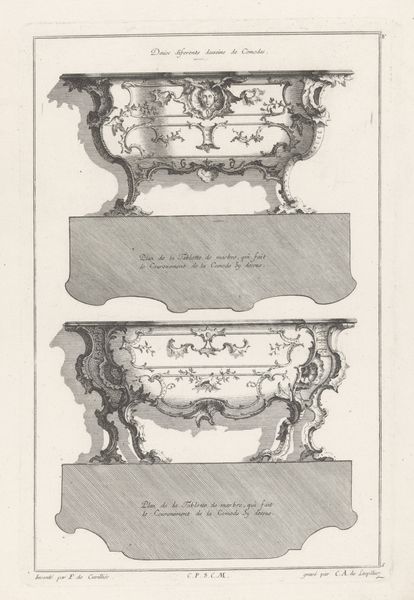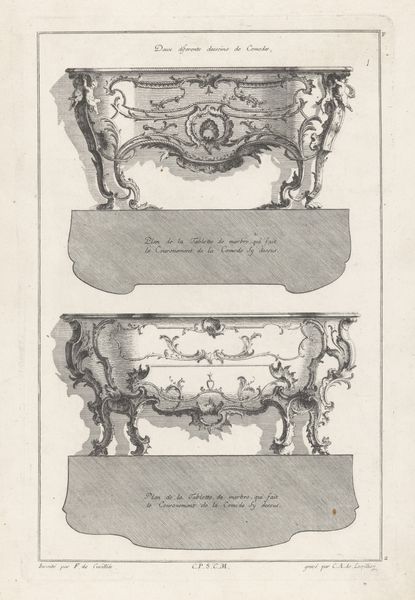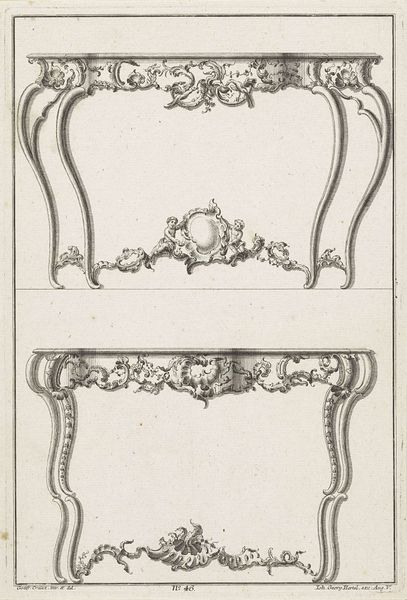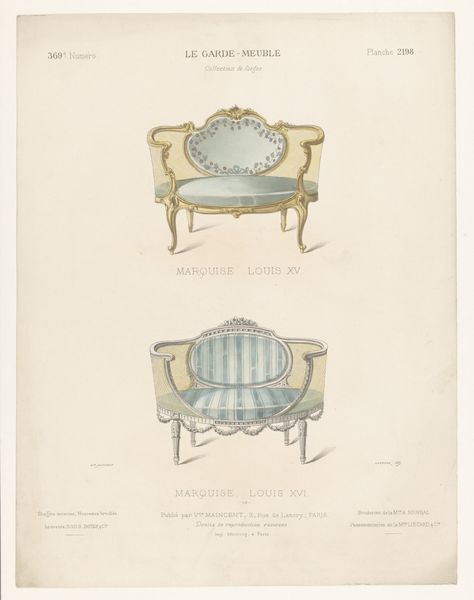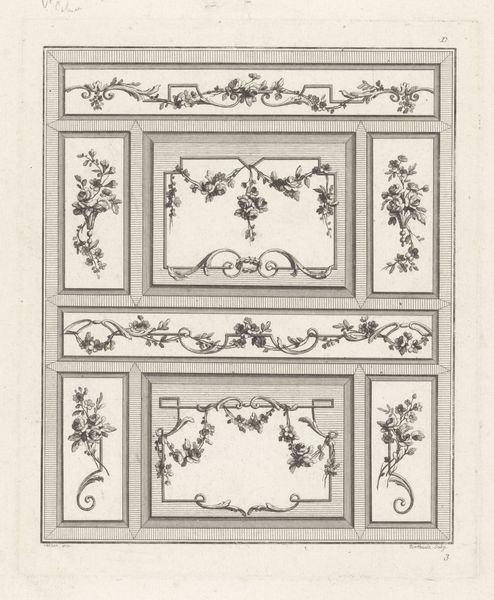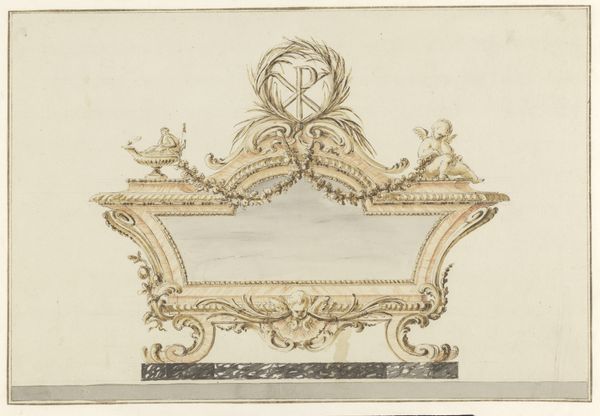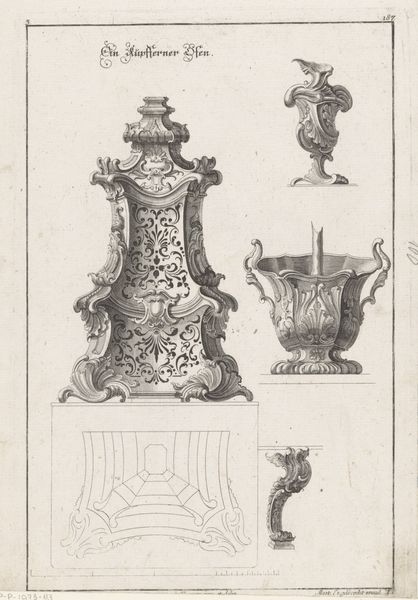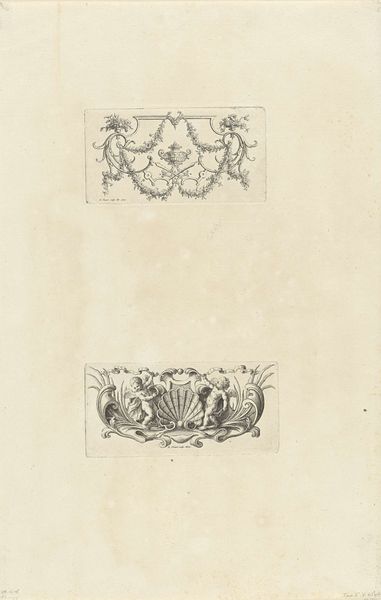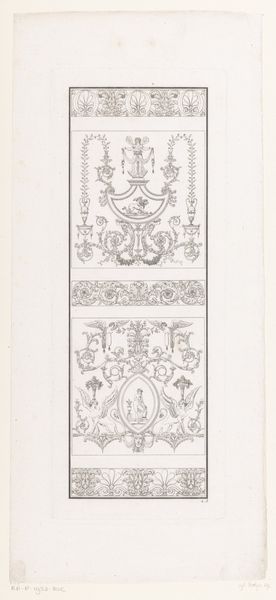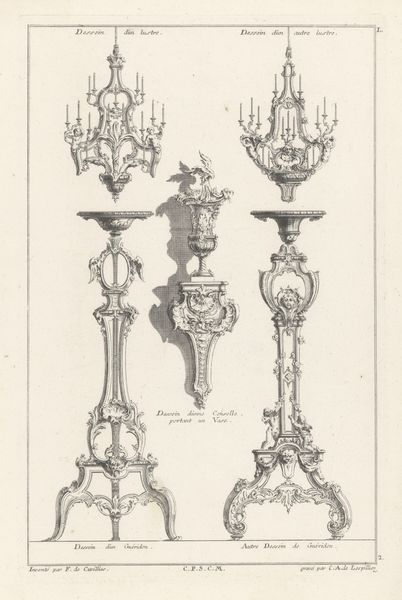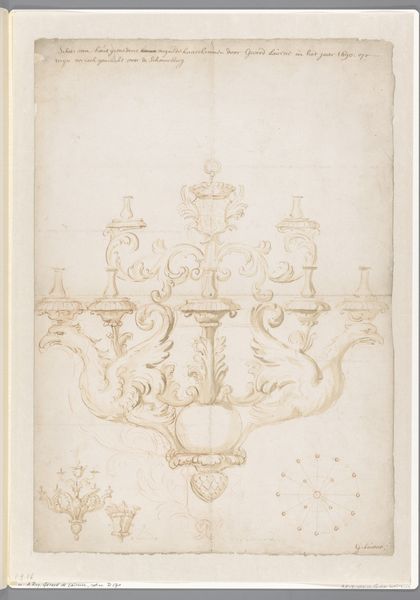
drawing, paper, engraving
#
drawing
#
baroque
#
old engraving style
#
paper
#
decorative-art
#
engraving
Dimensions: height 368 mm, width 238 mm
Copyright: Rijks Museum: Open Domain
Editor: So, this is "Twee Commodes," an engraving by Carl Albert von Lespilliez from 1745. It’s quite detailed, almost like an architectural drawing. What immediately strikes me is the overt display of wealth and status embedded within these decorative objects. What are your first impressions? Curator: Indeed. It's fascinating how seemingly mundane objects, like commodes, become vessels for powerful symbolic expression. Look at the flourishes – the asymmetry of the Rococo style, the use of masks. What emotional impact do you think these elements had on the viewer then, and perhaps now? Editor: I imagine they signaled sophistication, maybe even power. Those masks…they feel a little theatrical, almost like hidden faces. Does the presence of such motifs always carry a consistent message or are these shaped by their cultural context? Curator: Cultural context is paramount. Consider the commode itself: a piece of furniture designed for storage, yet elevated to the level of art. The masks could allude to classical theater, invoking ideas of drama, role-playing, and even concealed identity. Are these just designs, or reflections of something deeper in the human psyche? Editor: It's like these objects aren't just furniture; they're telling a story about the people who owned them, their aspirations, and their sense of self. Curator: Exactly! The symbols resonate on many levels, hinting at societal values and perhaps even private desires. It prompts a reflection on the visual language of power. Editor: It's incredible how much can be gleaned from something as simple as furniture design. It really reframes how I see objects, seeing beyond utility to cultural encoding. Curator: Indeed! Each crafted piece holds a world of symbolic information, if only we learn how to see it.
Comments
No comments
Be the first to comment and join the conversation on the ultimate creative platform.

